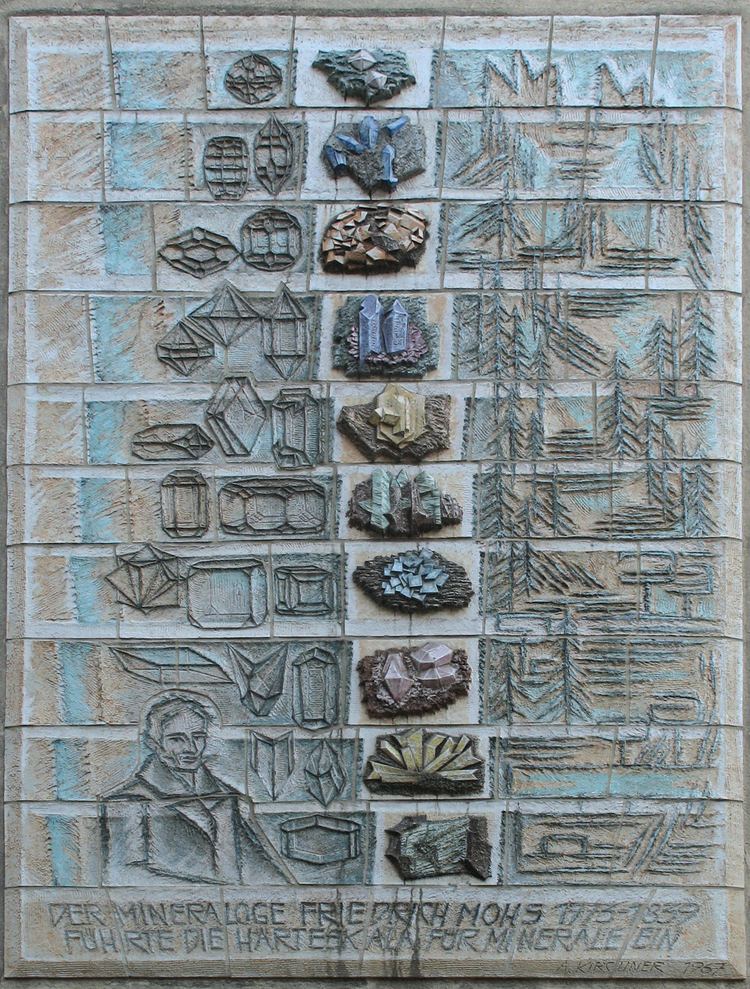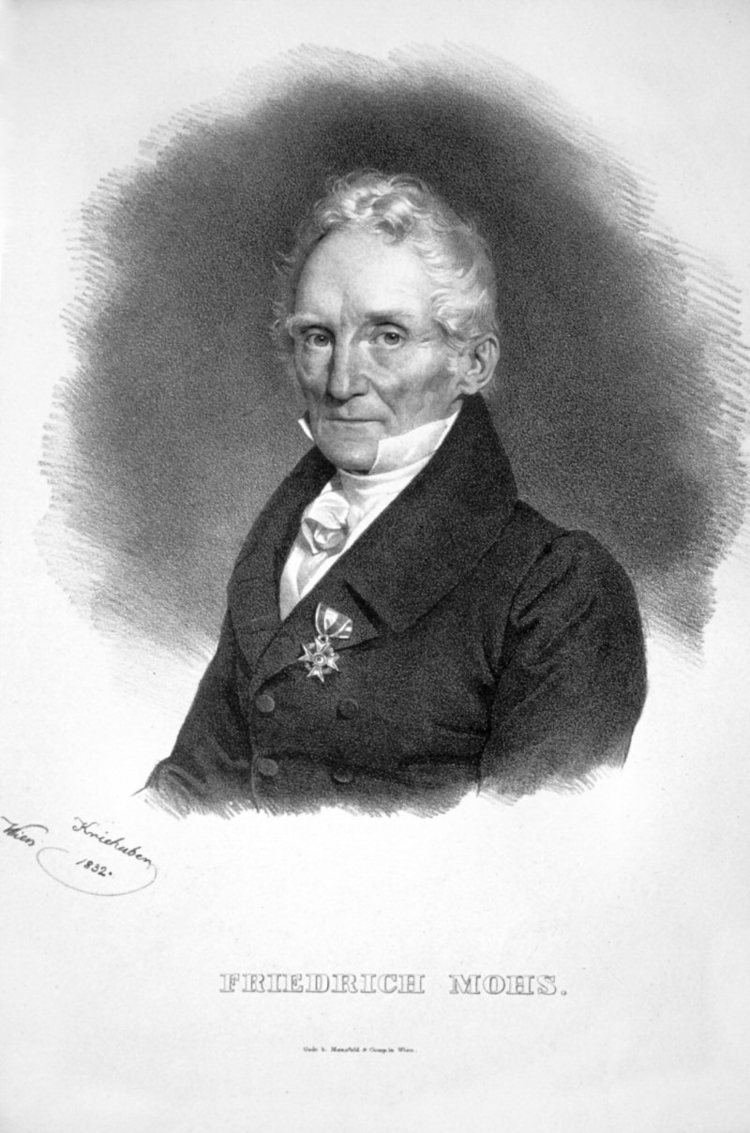Name Friedrich Mohs Role Geologist | ||
Known for Mohs scale of mineral hardness Died September 29, 1839, Agordo, Italy Education Martin Luther University of Halle-Wittenberg | ||
Mohs Scale of Hardness||Hindi||Geology Concepts Part-1
Carl Friedrich Christian Mohs ( [moːs]; 29 January 1773 – 29 September 1839) was a German geologist and mineralogist.
Contents
- Mohs Scale of HardnessHindiGeology Concepts Part 1
- Friedrich Mohs
- Career
- Mineral properties
- Later career
- References

Friedrich Mohs
Career

Mohs, born in Gernrode, Germany, studied chemistry, mathematics and physics at the University of Halle and also studied at the Mining Academy in Freiberg, Saxony. After assuming the position of a foreman at a mine in 1801, Mohs moved in 1802 to Austria, where he was employed in trying to identify the minerals in a private collection of a banker. In 1812 he moved to Graz where he was employed by Archduke Johann in his newly established museum and science academy, which was subsequently divided into the Joanneum and the Graz University of Technology
Mineral properties
As part of this task, he started classifying minerals by their physical characteristics, in spite of their chemical composition, as had been done traditionally. This emphasis on physical characteristics was at odds with the prevailing chemical systematics. However, both Theophrastus and Pliny the Elder had compared the relative hardness of minerals known to them in the ancient world, including diamond and quartz. They knew that diamond could scratch quartz, so showing it to be harder. This became the basis of the hardness scale developed by Mohs. The hardest mineral, diamond was given a value of 10 and softer minerals such as talc were given the very low value of 1 (unity). Other minerals were given intermediate values, depending on their ability to scratch another mineral in the scale. Thus gypsum was given the value 2 because it will scratch talc crystals, and calcite the value 3 because it will scratch gypsum. Minerals are also now classified by chemical characteristics, but the physical properties are still useful in field examination.
Later career
In 1812, Mohs became a professor in Graz, and moved six years later to Freiberg, Saxony, before finally settling down to practice his profession in Vienna in 1826. Mohs died during a trip to Agordo, Italy in 1839, at the age of 66.
